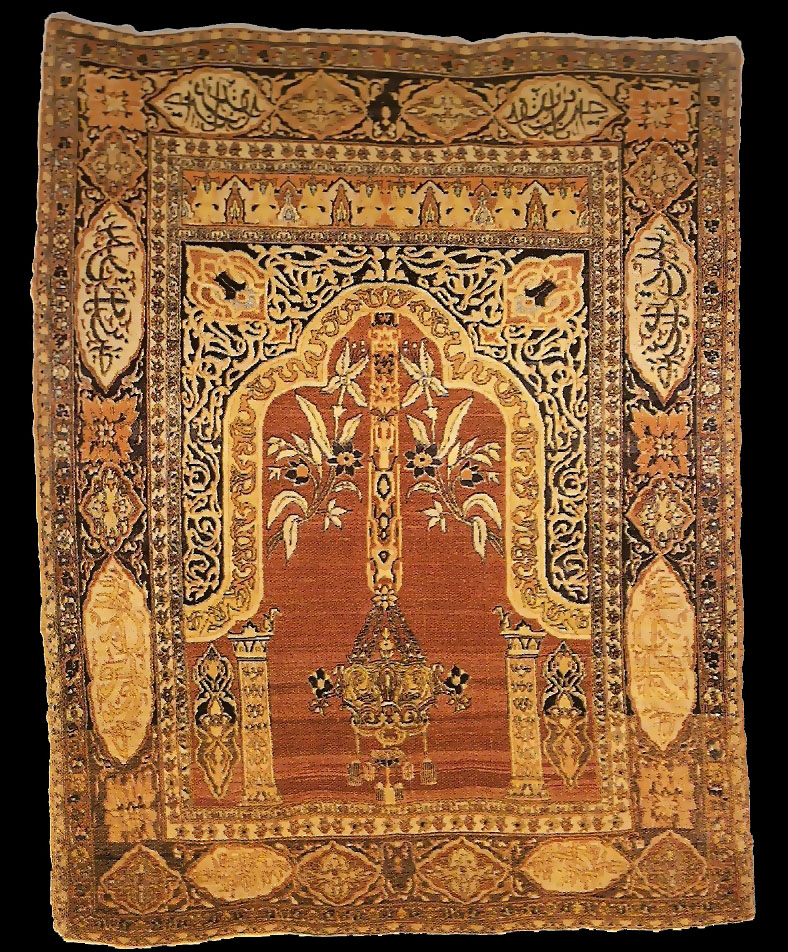|
Tabriz prayer rug
Mid 19th century Verona, Tiziano Meglioranzi Collection
Around the mid-19th century, after the 18th-century crisis created by the
Afghan invasion of 1722, a rebirth of the Iranian carpet occurred, with the
establishment of new city works and a rediscovery of ancient Safavid
decorations. New types also appeared, such as the prayer rug, marked by a
very elaborate curvilinear mihrab that contained lifelike flowers and
sometimes animals, as well as the sacred lamp. However, this was a foreign,
imported genre, produced primarily to meet the demands of the Western
market, and thus lacks special significance.
 |

